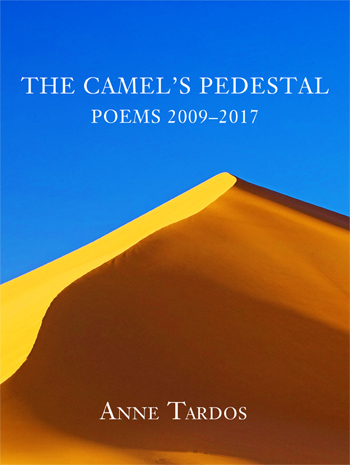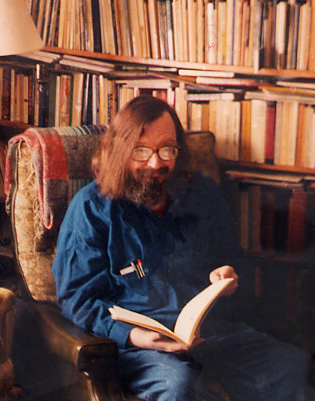I go to sleep near the infants
breathing bodies, a small herd of nature
in layers of animation, the unknown
unfolding identical powers
delivered through a gateway of hearts
at body temperature. In a nest
of sleeping birds, you’re the bird
you’re the baby, I can hear you dreaming
fall forward into glistening swollen eyes
musty orange leaves, soft wet
twigs, the wings and shells of insects
fragments of bone in capillaries of moss
humus tangled into nets emerging
from the curve in the waterway
of night, wet roots and branches
pebbles in the pit of the tree’s black torso
more moss in leaf litter
emerging from bark, a currawong’s
yellow eye a single grain of gold
stars in the dark forest
a whisper escaloping space
with the radiance of the world
like a meteor blazing over the crest
silhouette trees eating fire as it falls
from the sky, consuming darkness
in a well of the absolute cold
I can smell in a long, drawn-in breath
smelling earth rock, a planet
of mammalian fur
a wind stirs
comes up full of energy
like a cold fire started in the centre of the planet
I see a star blank in and out
as a branch swings too-and-fro
and then gone again, the cosmos
blinded by low cloud, black squall & spume
thrown up into moonlight, rain
chaos spent, all the stars
blown into the bush
I see them flicker in the black leaves
and wet grasses. I get up
and watch rain thrash
under full moon light
a flower growing stronger in my memory
the closer death comes
to the window
as a young
man I stood in a colour field
the sky liberated
an avalanche of sweet pollen
in the wind, light pink apple
& plum flowers, chords
of sweat hanging in the air
gold spider webs and hot leaves
shimmering in the breeze
white clover and dandelion heads
riding a deep green pool
an aurora of tributaries in the blood
all over branch tips
to grow a rich mantle of breathing
walking, speaking, hearing
in a tunnel of wind
falling from the sun
even in sleep
beneath a dome of small white
moonlit clouds
the history of the human
dilates in a dream of darkness
a swan presented on a lake
of blue paper, figures of speech
curled up asleep on the hillside
under murmurous starlings
coveys of quails, the eggs of doves
pockets of eggs nesting
in the roots of tall yellow grasses
thick undergrowth & vapour
a woollen cortex
living in roots by the well
shining nerves in webs
strung out through the morning
gas
emerging from the shadow
of sleep, the children stir
as a black cockatoo glides creaking overhead
the bright yellow sun on the cheek
the sun, the sun in the tail
high over trees beating silently
feathers escaloping wind
then I hear another, then another
more black cockatoos
I stand by the window, count fourteen
emerging from the night’s limpid air
the sun on their cheeks
in their tails, their creaking cry
sending stories out into the world
listening for a sign
that they have been heard
by the world, and so the kids
begin to squawk like the black cockatoos
their voices’ buoyancy
tender weights to swim
through the hardwoods, the ear
storing weight, the iris
storing colour, skin like a mirror
underwater, under air, a line of bubbles
along the spine in a line of teeth
the tongue planting letters
of blood every vertebrae
in a forest of sweet reversal
as leaves rise up in the larynx
to choke epistemology
like a solstice, just like words and sounds
are very condensed stories
every word here is a cosmos, the kids
running round like black cockatoos
in their pajamas
later
that day I turned the corner
of the house, light coiled suddenly
in gold steps drawn from the sun
through alder and hackberry branches
tree ferns and grass, stripes of lava
spread over the grass
and in the corner of the garden, at an edge
of the shade, a swirling cloud
of butterflies, fourteen black butterflies
just like the morning’s heralds
burst around the lawn
doodling black and orange and white
lines in the light against dark glossy
ferns in shadow. I stood and watched
their frail, articulate wings
daylight tensing up and down
with every emphasis. Each act of will
is responsible to life
and movement, the patterning
of air, light, sound, time
filaments of the cosmos made sentient
in a swirling body of butterflies
a tattoo of black wing ink
blooming through the air in the movement
of many wings, their filigree of depth
and duration said over and over
leaping from the skin
of all my ancestors
and everything they have said to me
as I
listened to the speaking form
of turning wings
I heard their voices too.
One big butterfly flew right out
took a couple of languid turns
around my head & blew away
as quick as the shadow of a black cockatoo
flying high into early evening,
calling we are still here
we are still here, we are still here.
[author’s note. “Everything is Speaking” was composed in mid-2016, as a companion piece, or perhaps more as a conversation, with Warren Cariou’s essay “Life-Telling:Indigenous Oral Autobiography and the Performance of Relation.” Together with Nēpia Mahuika’s “Telling ‘Us’ in the ‘Days Destined to You’”, our conversation was published in the summer 2016 issue of Biography, “Indigenous Conversations about Biography”, guest edited by Alice Te Punga Somerville, Daniel Heath Justice, Noelani Arista. Director of theCentre for Creative Writing and Oral Culture at the University of Manitoba, where he also holds a Canada Research Chair, Warren is active as a critic of Indigenous literatures and oral traditions, and has also produced works of film, photography, memoir, fiction, and poetry that focus on Indigenous experiences in Canada. Like me, Warren shares Aboriginal Métis and European heritage. His essay focuses on the work of Lakota/Kiowa Apache storyteller Dovie Thomason, maintaining that Indigenous forms of life-telling are central, vital and living modes of contemporary Indigenous expression. Written in Gundangara and Dharug country, “Everything is Speaking” reaches across the Pacific to Turtle Island, contributing to an Indigenous ontopoiesis in which filial, environmental and spiritual being are present, vocal and alive.]
Peter Minter is an Australian poet, poetry editor and writer on poetry and poetics. His books include the award-winning Empty Texas and blue grass, and his poetry has been widely published and translated internationally, most recently in his book In the Serious Light of Nothing (Chinese University Press Hong Kong, 2013). He was a founding editor of Cordite poetry magazine, co-edited the pioneering anthologies Calyx: 30 Contemporary Australian Poets and the Macquarie PEN Anthology of Aboriginal Literature, and has been the poetry editor for leading Australian journals Meanjinand Overland. He shares Aboriginal, Scottish and English ancestry, and teaches Indigenous Studies, Australian Literature and Creative Writing at the University of Sydney.

















